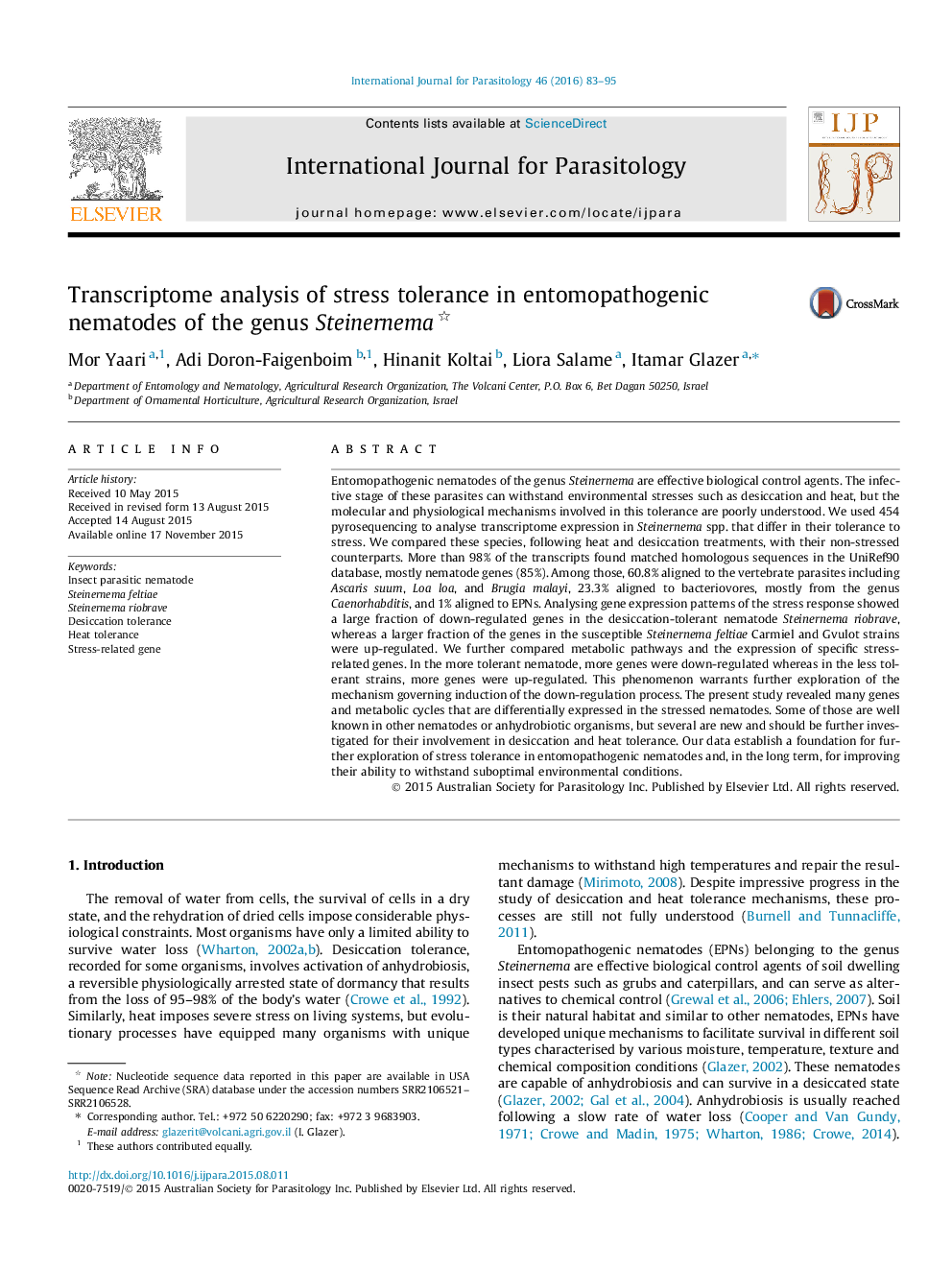| کد مقاله | کد نشریه | سال انتشار | مقاله انگلیسی | نسخه تمام متن |
|---|---|---|---|---|
| 2435962 | 1107237 | 2016 | 13 صفحه PDF | دانلود رایگان |

• Differences in gene expression were compared between nematodes that differ in tolerance to heat and desiccation stresses.
• In tolerant nematodes, more genes were down-regulated whereas in the less tolerant strains, more genes were upregulated.
• The study revealed many genes and metabolic cycles that are differentially expressed in the stressed nematodes.
Entomopathogenic nematodes of the genus Steinernema are effective biological control agents. The infective stage of these parasites can withstand environmental stresses such as desiccation and heat, but the molecular and physiological mechanisms involved in this tolerance are poorly understood. We used 454 pyrosequencing to analyse transcriptome expression in Steinernema spp. that differ in their tolerance to stress. We compared these species, following heat and desiccation treatments, with their non-stressed counterparts. More than 98% of the transcripts found matched homologous sequences in the UniRef90 database, mostly nematode genes (85%). Among those, 60.8% aligned to the vertebrate parasites including Ascaris suum, Loa loa, and Brugia malayi, 23.3% aligned to bacteriovores, mostly from the genus Caenorhabditis, and 1% aligned to EPNs. Analysing gene expression patterns of the stress response showed a large fraction of down-regulated genes in the desiccation-tolerant nematode Steinernema riobrave, whereas a larger fraction of the genes in the susceptible Steinernema feltiae Carmiel and Gvulot strains were up-regulated. We further compared metabolic pathways and the expression of specific stress-related genes. In the more tolerant nematode, more genes were down-regulated whereas in the less tolerant strains, more genes were up-regulated. This phenomenon warrants further exploration of the mechanism governing induction of the down-regulation process. The present study revealed many genes and metabolic cycles that are differentially expressed in the stressed nematodes. Some of those are well known in other nematodes or anhydrobiotic organisms, but several are new and should be further investigated for their involvement in desiccation and heat tolerance. Our data establish a foundation for further exploration of stress tolerance in entomopathogenic nematodes and, in the long term, for improving their ability to withstand suboptimal environmental conditions.
Figure optionsDownload high-quality image (124 K)Download as PowerPoint slide
Journal: International Journal for Parasitology - Volume 46, Issue 2, February 2016, Pages 83–95